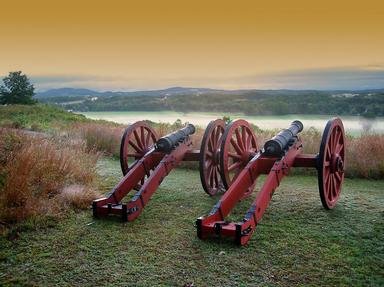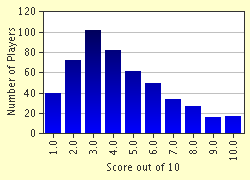Quiz Answer Key and Fun Facts
1. On March 12th, 1864, an open letter to the editor was published in the New York Herald that sharply criticized George Meade's handling of events at the Battle of Gettysburg. How was this letter signed?
2. On Friday, November 25th, 1864, the Confederacy made an unsuccessful attack on which of the following cities?
3. In January of 1864, Joseph E. Johnson, commanding general of the Army of Tennessee, received a letter, signed by a number of his subordinates, advocating that it was critical to the survival of the Confederacy that steps be taken immediately to enlist, arm, and train regiments of slaves to fight for the South. Who was the highest ranking person to sign this letter?
4. During the Civil War what was another term for a picket (one usually found on horseback rather then on foot)?
5. What was important about the battle at Island Mount, Missouri on October 19, 1862?
6. Major John D. Barry of the 18th North Carolina Infantry has a "claim to fame" that had significant consequences during the Civil War. What did Barry do?
7. Which pair of Confederate names does history (rightly or wrongly) associate with the first and last shots of the Civil War?
8. In December of 1862, at the Battle of Stones River, elements of a Union army formation, claiming that they were being used for a purpose they had not enlisted to perform, were responsible for a mutiny when they refused the order to march to the front and engage the enemy as a regular line unit. Can you name this formation?
9. Johnathan K. Letterman is best known for which of the following accomplishments during the Civil War?
10. At the Battle of 1st Manassas (July 1861), General P. G. T. Beauregard commanded the Army of the Potomac.
Source: Author
hohohaha
This quiz was reviewed by FunTrivia editor
bloomsby before going online.
Any errors found in FunTrivia content are routinely corrected through our feedback system.


